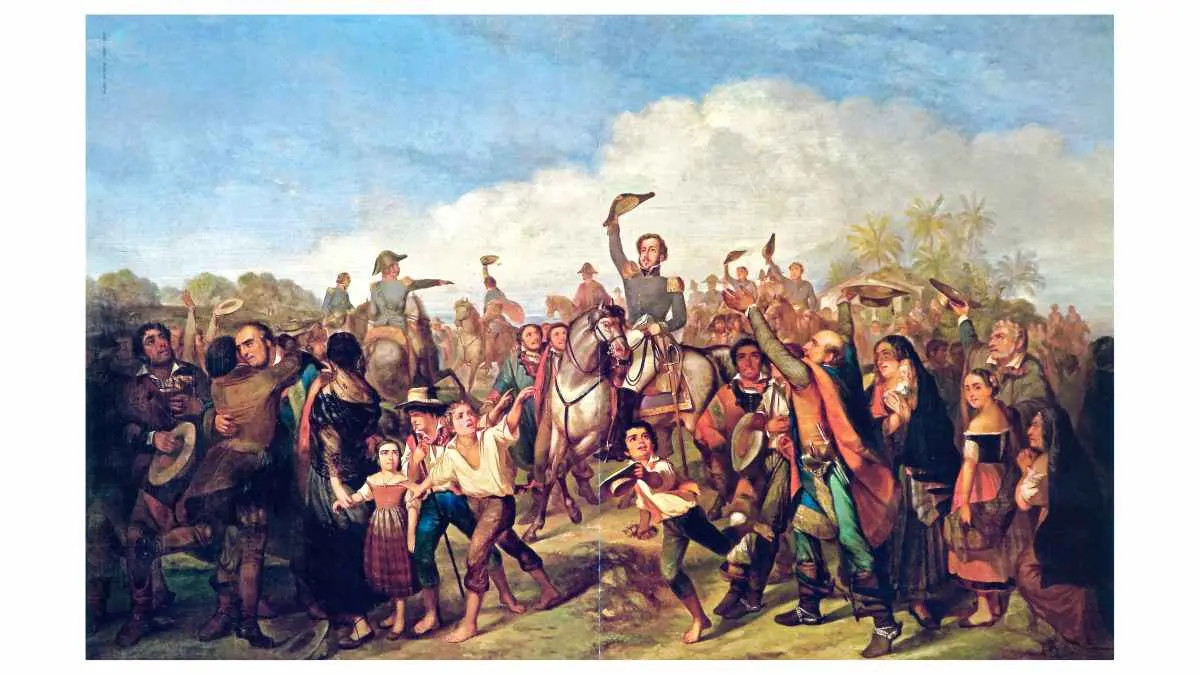The Decisive Moment: The Cry of Ipiranga
Let's go back in time: September 7, 1822. Imagine the tension. The prince regent, Dom Pedro, is traveling when he receives urgent letters from the court in Portugal. The orders are an ultimatum: nullify the power he has built in Brazil and return immediately.
It was a crossroads. To return would mean demoting Brazil back to a mere colony. To stay, however, was an act of rebellion. In a gesture that would go down in history, he raised his sword and shouted the phrase that would define the future: "Independence or Death!" This act, the Cry of Ipiranga, was the spark that severed over 300 years of colonial ties.
So, who declared Brazil's Independence?
The protagonist of this moment was Dom Pedro I. As the son of the King of Portugal, his decision carried immense weight. By defying his own Crown, he not only led the separation process but also became the first emperor of Brazil, a path quite different from that taken by its Spanish-American neighbors.

A Culmination, Not a Beginning
The Cry of Ipiranga didn't happen in a vacuum. It was the climax of a series of events that gradually made separation inevitable. Browse the timeline to connect the dots and understand the context that led to September 7th.
The Legacy of Independence: What Really Changed?
Achieving sovereignty was a giant leap, but the "new" Brazil born in 1822 still carried many scars from the past. Analyzing its legacy is crucial to understanding the complexities of Brazil today.
Achievements: The Building of a State
The main achievement was, undoubtedly, political sovereignty. Brazil could now define its own laws, foreign policy, and economic direction without asking for Lisbon's permission. Furthermore, the choice of a monarchy, with the central figure of an emperor, was a strategy that successfully maintained the unity of a vast territory, avoiding the fragmentation that occurred in the Spanish colonies. A continent-sized country was created, a remarkable feat for the time.
Contradictions: Independence for Whom?
Herein lies the great complexity of the process. The independence was led by the agrarian elite, and their interests shaped the new country. Slavery, the foundation of the economy and society, was not only maintained but strengthened in the following decades. Political freedom did not translate into social freedom for the majority of the population. Power remained in the hands of large landowners, and social inequality, a colonial inheritance, persisted as a deep-seated structure of the new nation. Citizenship was for the few.
The Key Figures Behind the History
History is made by people, with their ambitions, fears, and ideals. Dom Pedro I did not act alone. Meet other figures, men and women, whose actions were decisive for the outcome of 1822.
For Educators and Curious Minds
This material goes beyond simple information. It is a tool for thinking critically about history. Here’s how you can use it:
1. Spark Debates with the "Legacy" Section
Use the "Achievements vs. Contradictions" duality as a starting point. Ask students to discuss: "Was independence a true revolution or just a change of power at the top?" This encourages critical thinking about who benefited from the event.
2. Create Activities with the "Timeline"
Challenge students to pick two events from the timeline and write a paragraph explaining the cause-and-effect relationship between them. This helps them understand history as a process, not just isolated facts.
3. Explore Biographies with the "Key Figures"
Divide the class into groups, each responsible for one key figure. Have them research further and present not only their accomplishments but also their motivations. Comparing the perspectives of D. Pedro I, Leopoldina, and Maria Quitéria enriches the perception of the period.
Sources for Further Study
To ensure reliability (E-E-A-T), all information presented here is based on consolidated historical sources. We recommend the digital archives of renowned institutions for additional research:

